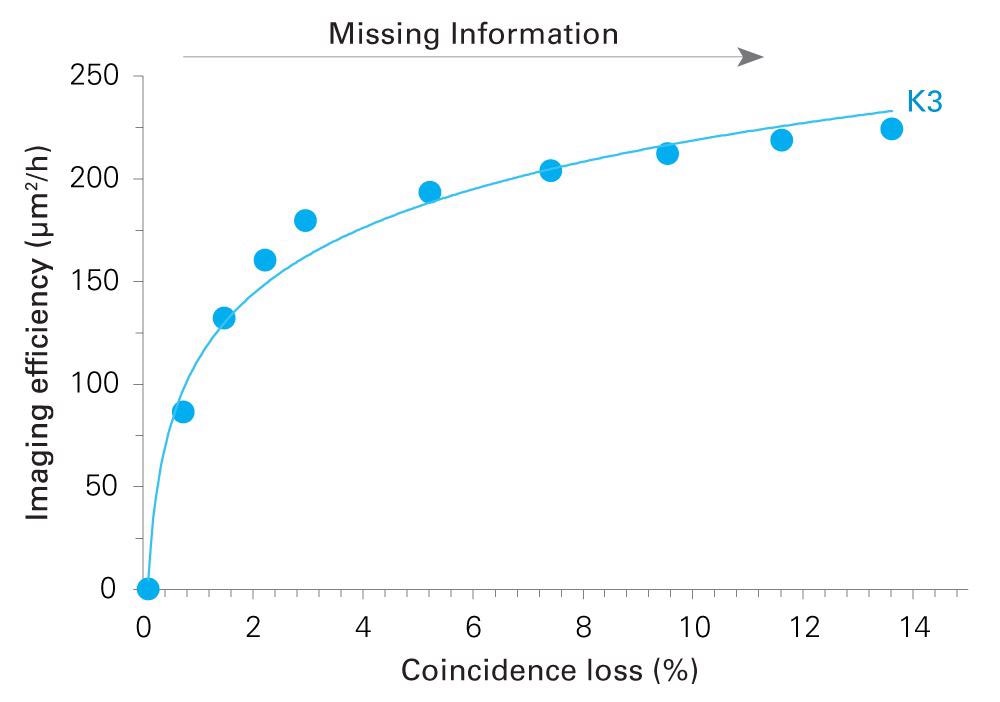Gatan’s K3 Camera is the new imaging performance benchmark for direct detection cameras.
Features:
The next-generation K3 Camera has been redesigned from the ground up to meet the most rigorous low-dose electron microscopy (EM) applications in life science and materials science research. Gatan’s broad experience in the supply of real-time, single-electron counting direct detection cameras has culminated in the K3® camera range.
- Powerful inline signal processing will enhance the DQE beyond that of the K2® camera; the inclusion of CDS mode pushes this even higher
- Real-time electron counting tell the users if the samples are good
- Optional inline, GPU-based motion correction eliminates the need to save terabytes of raw frames
- 1,500 full frames per second—3.75 times the speed of the K2 camera
- Match the field of view with the user’s application requirements:
- K3 (24 megapixels) — Increase throughput for the most powerful microscopes
- K3 Base (14 megapixels) — Convert screening microscopes into data collectors

Image Credit: Gatan Inc.
Depicting missing information from Image efficacy vs coincidence loss
Cryo EM reveals mechanisms of gating and drug modulation in 5 HT3A receptors webinar
Cryo EM reveals mechanisms of gating and drug modulation in 5 HT3A receptors webinar. The serotonin 5-HT3 receptor antagonists or “setrons” are the most common therapeutics to manage the side effects of chemotherapy and IBS. This webinar explored the single-particle cryo-electron microscopy research of Dr Sudha Chakrapani, Director of Cryo Electron Microscopy Core, and the Cleveland Center for Membrane and Structural Biology. Results were presented of recently solved structures of the full-length 5HT3AR in the resting state, in serotonin-activated conformations, and in complex with several clinically used drugs. Video Credit: Gatan Inc.
Revealing Cyro-EM mechanism of gating and drug modulation in 5 HT3A receptors
High-resolution with the CryoARM/K3 combo: SerialEM, Latitude, and future data collection
High-resolution with the CryoARM/K3 combo: SerialEM, Latitude, and future data collection. Recent results have demonstrated the ability of the CryoARM/K3 combination to produce structures at ultra-high resolution for particles of various sizes and symmetries. Following the initial technical achievements, this hardware combination is now being used to provide important biological insights as well. In this presentation, Alan Merk, Electron Microscopist from NIH, will review some of the structures we have obtained in the past with the CryoARM/K3 using SerialEM, report on ongoing work with Latitude S, and look forward to future directions. Video Credit: Gatan Inc.
Capabilities of Cyro ARM/K3 when integrated with Serial EM, Latitude, and future data collection
Using Structural Biology to Drive Pandemic Preparedness with Vessler Laboratory
Using Structural Biology to Drive Pandemic Preparedness Webinar. Safe, effective, and scalable vaccines and therapeutics are needed to halt the ongoing SARS-CoV-2 pandemic. The receptor-binding domain (RBD) is immunodominant and the target of 90% of the neutralizing activity present in SARS-CoV-2 convlescent sera. To further understand this point, we structurally defined an RBD antigenic map using cryo-electron microscopy, ELISA, and BLI. Video Credit: Gatan Inc.
The effectiveness of structural biology to drive pandemic preparedness
NUANCE Workshop on 4D STEM: Data Processing using Python
NUANCE Workshop on 4D STEM: Data Processing using Python. Video Credit: Gatan Inc.
Nuance workshop demonstrating on 4D STEM
NUANCE Workshop on 4D STEM: Data Processing in DM
NUANCE Workshop on 4D STEM: Data Processing in DM. The workshop has included depicting the 4D STEM data processing in DigitalMicograph which has assisted in its applications including strain mapping, virtual apertures, DPC, and many more. A brief demonstration by Anahita Pakzad. Video Credit: Gatan Inc.
An overview on 4D STEM data processing in DigitalMicrograph
NUANCE Workshop on 4D STEM: Fundamentals of Electron Diffraction and 4D STEM
NUANCE Workshop on 4D STEM: Fundamentals of Electron Diffraction and 4D STEM. The workshop is dedicated to illustrating the fundamentals of electron diffraction and 4D STEM by categorizing into 3 parts i.e. introduction to CBED, 4D STEM, application in soft/hard interfaces, and soft material by Roberto dos Reis. Video Credit: Gatan Inc.